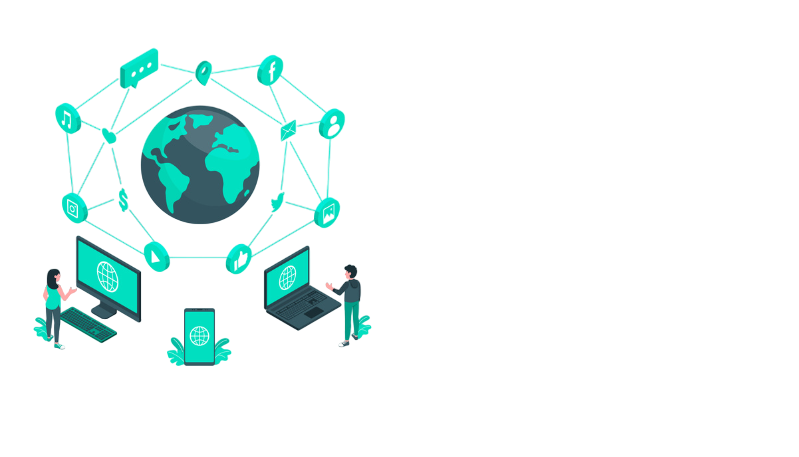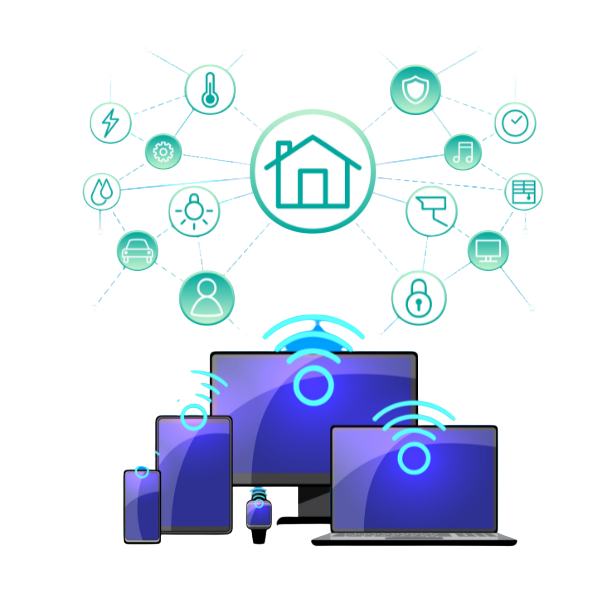Scalability
IoT systems are highly scalable, meaning they can easily grow to accommodate more devices or be adapted to meet the evolving needs of users and businesses, making them flexible for various applications.



The Internet of Things (IoT) is a network of interconnected devices that communicate and exchange data over the internet without requiring direct human intervention. These devices, ranging from everyday objects like smart thermostats and wearables to industrial machinery and home appliances, are embedded with sensors, software, and other technologies to collect, process, and transmit data. IoT enables automation, remote monitoring, and data driven decision making across various industries such as healthcare, manufacturing, transportation, and agriculture.
IoT systems are highly scalable, meaning they can easily grow to accommodate more devices or be adapted to meet the evolving needs of users and businesses, making them flexible for various applications.
Many IoT devices are designed to be energy efficient, often powered by low energy sensors and optimized to minimize power consumption while still providing high performance functionality.



Choosing us for your Internet of Things (IoT) needs means partnering with a team that is dedicated to delivering innovative, reliable, and scalable IoT solutions tailored to your specific requirements. We leverage cutting edge technologies and industry best practices to design and implement IoT systems that enhance efficiency, optimize performance, and drive data driven decision making. Whether you are looking to automate processes, monitor systems remotely, or improve operational insights, we provide seamless integration and robust support to ensure your IoT solutions evolve with your business. Our focus on quality, security, and customer satisfaction ensures that you get practical, long term value from your IoT investments.




IoT communication protocols are essential for enabling seamless data exchange between IoT devices and their networks. These protocols define the rules and standards for communication, ensuring that devices can share information reliably and securely. Common IoT communication protocols include Wi-Fi and Bluetooth, which are widely used for short range, high speed data transfer, making them suitable for applications in smart homes and wearable devices. Zigbee and Z Wave are low power, mesh networking protocols ideal for smart home automation, while MQTT and CoAP are lightweight protocols designed for low bandwidth, low power devices that need efficient communication over long distances. 5G is emerging as a next generation protocol for IoT, offering high speed, low latency communication for massive numbers of connected devices in real time applications. Additionally, Low Power Wide Area Networks (LPWAN) like LoRaWAN provide long range connectivity with minimal power consumption, ideal for remote monitoring in agriculture and industrial applications. The choice of communication protocol depends on factors such as range, power consumption, data transfer rate, and the specific use case, ensuring that IoT systems can operate effectively across different environments and industries.
In addition to the commonly used protocols, 5G is emerging as a transformative communication standard for IoT, offering significantly faster speeds, ultra low latency, and the ability to handle a massive number of connected devices simultaneously. This makes 5G ideal for real time applications like autonomous vehicles, industrial automation, and smart cities, where fast and reliable communication is crucial. Furthermore, Edge Computing is often integrated with IoT communication protocols to process data closer to the source, reducing latency and bandwidth usage. This combination allows for faster decision making and more efficient operation of IoT systems, especially in time sensitive applications. The choice of protocol plays a vital role in determining how well an IoT system performs, scales, and integrates into larger networks.
Our work process for IoT begins with understanding your specific needs and designing a customized IoT solution that seamlessly integrates into your infrastructure. We then develop, deploy, and continuously optimize the system, ensuring reliable performance and scalability for long term success.
We collaborate with you to understand your unique needs, objectives, and challenges, ensuring a tailored IoT solution that aligns with your goals.
Our team designs and develops the IoT system, selecting the right communication protocols, sensors, and software to ensure optimal functionality and efficiency.
After deployment, we monitor system performance, provide continuous support, and make necessary improvements to ensure scalability, reliability, and alignment with evolving business requirements.











